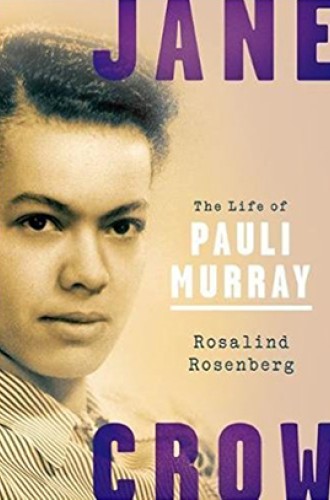Pauli Murray’s many identities
The first black female Episcopal priest was also an early proponent of ideas that would develop into black feminism, intersectionality, and more.
The life of Pauli Murray shows that one person can do a lot to fight discrimination and promote social justice. Barnard historian Rosalind Rosenberg tells the story of the first black woman to be ordained as an Episcopal priest—which was just one part of her trailblazing life.
Murray bridged multiple identities as a person “in between.” She was multiracial (black, white, and Native American), a woman who said she often felt more like a man and was attracted to women, a northerner and a southerner, both working class and middle class, and even left-handed but forced to learn to write right-handed. Although highly influential, she never arrived at a place where she had an easy life. Always on the move, she constantly fought uphill battles to redress arbitrary distinctions between people.
Read our latest issue or browse back issues.
In working for many oppressed groups at once, Murray set forth several ideas that foundationally changed how people think. Perhaps her most important idea was the one referred to in the title—Jane Crow—the “double discrimination she faced as a black female.” Murray was one of the first to argue that gender is analogous to race, sexism is similar to racism, and gender discrimination can be targeted using the same strategies used to target racial discrimination.
Murray was an activist lawyer and legal scholar who was also a deeply sociological thinker—in fact, she applied to a Ph.D. program in sociology at the University of North Carolina. (She was denied because of her race.) She was an early proponent of paradigm-shifting ideas that would develop into what we now call black feminism (a perspective that starts from the lived experience of black women), intersectionality (the reality that identities are interrelated in complex ways), and strong objectivity (the idea that multiple and diverse perspectives are needed to best understand the world). In Murray’s words, she could not and would not fragment herself “into Negro at one time, woman at another, or worker at another.” She was a founding member of the National Organization for Women but broke with the group when she saw it as too narrowly focused on the concerns of middle-class white women apart from issues of race and class.
She frequently paved new paths, seeking admission to schools and professions that excluded people like her. Rosenberg shows how Murray blazed ahead of her colleagues, many of whom worked against racism or sexism separately without taking on multiple forms of inequality—including gender identity. Murray’s story is particularly useful today to people who straddle multiple identities, strive to understand the mutability of identity categories, and seek validation in a society that continues to draw arbitrary distinctions and value some types of people more than others.
Murray drew vital comfort and strength from religion in the face of the hardships she faced, both those broadly typical of the human experience and those specific to her status as a “minority among minorities.” Although Murray’s faith is noted occasionally in the book and is the focus of a section about her pathbreaking ordination, I wish Rosenberg had devoted more attention to religion in relationship to other aspects of Murray’s life.
Rosenberg’s research is thorough, and her lively style keeps readers engaged. But her writing includes some unnecessary digressions, overstatements, and questionable remarks. For example, at one point Rosenberg states, “Within Christianity, only the Episcopal and Catholic churches remained intransigent on the subject of women’s ordination.” There are places in the book where readers may wish they had prior knowledge of the law and the history that Rosenberg discusses. Nevertheless, the book will be an edifying and enjoyable read for a general audience.
In the current American popular imagination that links religion and right-wing politics, it’s worth highlighting how religious values can be mobilized to promote equality. Murray faced disadvantage, found strength in her faith, fought injustice, bridged identities and groups, and showed how people of faith can be at the forefront of social change. She died just as the religious right was rising in the United States. Had she lived longer, she might have bridged religious and secular work for equality. Now it is up to a new generation.







